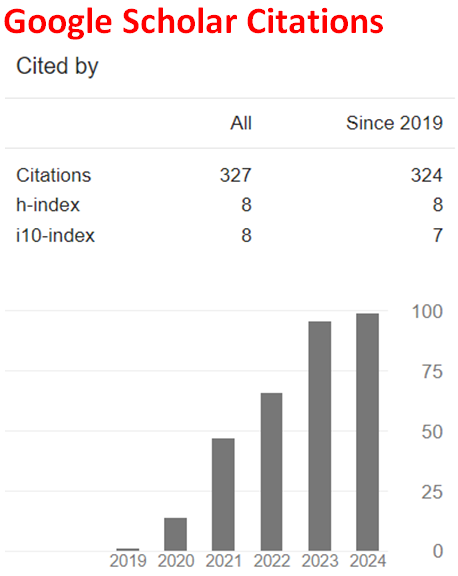Destructive Reduction of TEX by Lithium-DFT Treatment
Abstract
Interaction of lithium atom with TEX molecule which is a high density energetic material is considered within the restrictions of density functional theory at the level of UB3LYP/6-31++G(d,p). The results indicate that the lithium atom transfers an electron to TEX causing the rupture of one of C-N bonds of the structure. Some geometrical and quantum chemical data have been collected and discussed. A plausible mechanism has been suggested for the destructive reduction of TEX molecule.
Downloads
References
R.D. Chapman, R.A. O’Brien and P.A. Kondracki, N-Denitration of nitramines by dihydronicotinamides, Tetrahedron 52(29) (1996), 9655-9664. https://doi.org/10.1016/0040-4020(96)00502-9
T.W. Greene and P.G.M. Wuts, Protective Groups in Organic Synthesis, 2nd ed., New York: Wiley, 1991, p. 374.
C.L. Kitts, D.P. Cunnıngham and P.J. Unkefer, Isolation of three hexahydro-1,3,5-trinitro-1,3,5-triazine-degrading species of the family enterobacteriaceae from nitramine explosive-contaminated soil, Applied and Environmental Microbiology 60(12) (1994), 4608-4611. https://doi.org/10.1128/aem.60.12.4608-4611.1994
H. Nivinskas, J. Sarlauskas, Z. Anusevicius, H.S. Toogood, N.S. Scrutton and N. Cenas, Reduction of aliphatic nitroesters and N-nitramines by Enterobacter cloacae PB2 pentaerythritol tetranitrate reductase: quantitative structure-activity relationships, FEBS J. 275(24) (2008), 6192-203. https://doi.org/10.1111/j.1742-4658.2008.06744.x
V.K. Balakrishnan, F. Monteil-Rivera, A. Halasz, A. Corbeanu and J. Hawari, Decomposition of the polycyclic nitramine explosive, CL-20, by Fe0, Environmental Science and Technology 38(24) (2004), 6861-6866. https://doi.org/10.1021/es049423h
P. Armas, C.G. Francisco, R. Hernández and E. Suárez, Reduction of aliphatic nitramines. Approach to the synthesis of nitrosamines and amines, Tetrahedron Letters 27(27) (1986), 3195-3198. https://doi.org/10.1016/S0040-4039(00)84752-8
H. Nivinskas, R.L. Koder, Ž. Anusevičius, J. Šarlauskas, A.F. Miller and N. Cenas, Quantitative structure–activity relationships in two electron reduction of nitroaromatic compounds by Enterobacter cloacae NAD(P)H:Nitroreductase, Archives of Biochemistry and Biophysics 385(1) (2001), 170-178. https://doi.org/10.1006/abbi.2000.2127
L.F. Cannizzo and L.R. Huntsman, Destruction of nitramines employing aqueous dispersions of metal powders. 1996, US5523517A.
J.H. Kim, C. Jo, C.H. Lee and M.W. Byun, Reduction of carcinogenic N-nitrosamines and residual nitrite in model system sausage by irradiation, Journal of Food Science 67(4) (2006), 1370-1373. https://doi.org/10.1111/j.1365-2621.2002.tb10291.x
G. Lunn, E.B. Sansone and L.K. Keefer, Reduction of nitrosamines with aqueous titanium trichloride: convenient preparation of aliphatic hydrazines, J. Org. Chem. 49(19) (1984), 3470-3473. https://doi.org/10.1021/jo00193a007
A.K. Sikder and N. Sikder, A review of advanced high performance, insensitive and thermally stable energetic materials emerging for military and space applications, J. Hazardous Materials A 112 (2004), 1-15. https://doi.org/10.1016/j.jhazmat.2004.04.003
V.T. Ramarkrishnan, M. Vedachalam and J.M. Boyer, 4,10-Dinitro-2,6,8,12-tetraoxa-4,10-diazatetracyclo[5,5,0,05,903,11]dodecane, Heterocycles 31 (1990), 479-480. https://doi.org/10.3987/com-89-5192
E.C. Koch, TEX – 4,10-Dinitro-2,6,8,12-tetraoxa-4,10-diazatetracyclo[5.5.0.05,9.03,11]-dodecane – Review of a promising high density insensitive energetic material, Propellants Explos. Pyrotech. 40 (2015), 374-387. https://doi.org/10.1002/prep.201400195
Z.X. Li, Y.X. Ou and B.R. Chen, Synthesis of TEX from six kinds of different substituted piperazine, Hanneng Cailliao 9 (2001), 104-106.
T.M. Klapötke and H.G. Ann, Estimation of the crystalline density of nitramine (N-NO2 based) high energy density materials (HEDM), Propellants Explos. Pyrotech. 26 (2001), 221-224. https://doi.org/10.1002/15214087(200112)26:5<221::AID-PREP221>3.0.CO;2-T
S. Zeman, Relationship between detonation characteristics and 15N NMR chemical shifts of nitramines, J. Energetic Materials 17 (1999), 305-330. https://doi.org/10.1080/07370659908201793
J.J.P. Stewart, Optimization of parameters for semiempirical methods I. Method, J. Comput. Chem. 10 (1989), 209-220. https://doi.org/10.1002/jcc.540100208
J.J.P. Stewart, Optimization of parameters for semi empirical methods II. Application, J. Comput. Chem. 10 (1989), 221-264. https://doi.org/10.1002/jcc.540100209
A.R. Leach, Molecular Modeling, Essex: Longman, 1997.
P. Fletcher, Practical Methods of Optimization, New York: Wiley, 1990.
W. Kohn and L. Sham, Self-consistent equations including exchange and correlation effects, J. Phys. Rev. 140 (1965), 1133-1138. https://doi.org/10.1103/PhysRev.140.A1133
R.G. Parr and W. Yang, Density Functional Theory of Atoms and Molecules, London: Oxford University Press, 1989.
C.J. Cramer, Essentials of Computational Chemistry, Chichester, West Sussex: Wiley, 2004.
A.D. Becke, Density-functional exchange-energy approximation with correct asymptotic behavior, Phys. Rev. A 38 (1988), 3098-3100. https://doi.org/10.1103/PhysRevA.38.3098
S.H. Vosko, L. Wilk and M. Nusair, Accurate spin-dependent electron liquid correlation energies for local spin density calculations: a critical analysis, Can. J. Phys. 58 (1980), 1200-1211. https://doi.org/10.1139/p80-159
C. Lee, W. Yang and R.G. Parr, Development of the Colle-Salvetti correlation-energy formula into a functional of the electron density, Phys. Rev. B 37 (1988), 785-789. https://doi.org/10.1103/PhysRevB.37.785
SPARTAN 06, Wavefunction Inc., Irvine CA, USA, 2006.
A.N. Nesmeyanov and N.A. Nesmeyanov, Fundamentals of Organic Chemistry, V.4, 2nd ed., Moscow: Mir, 1981.

This work is licensed under a Creative Commons Attribution 4.0 International License.


